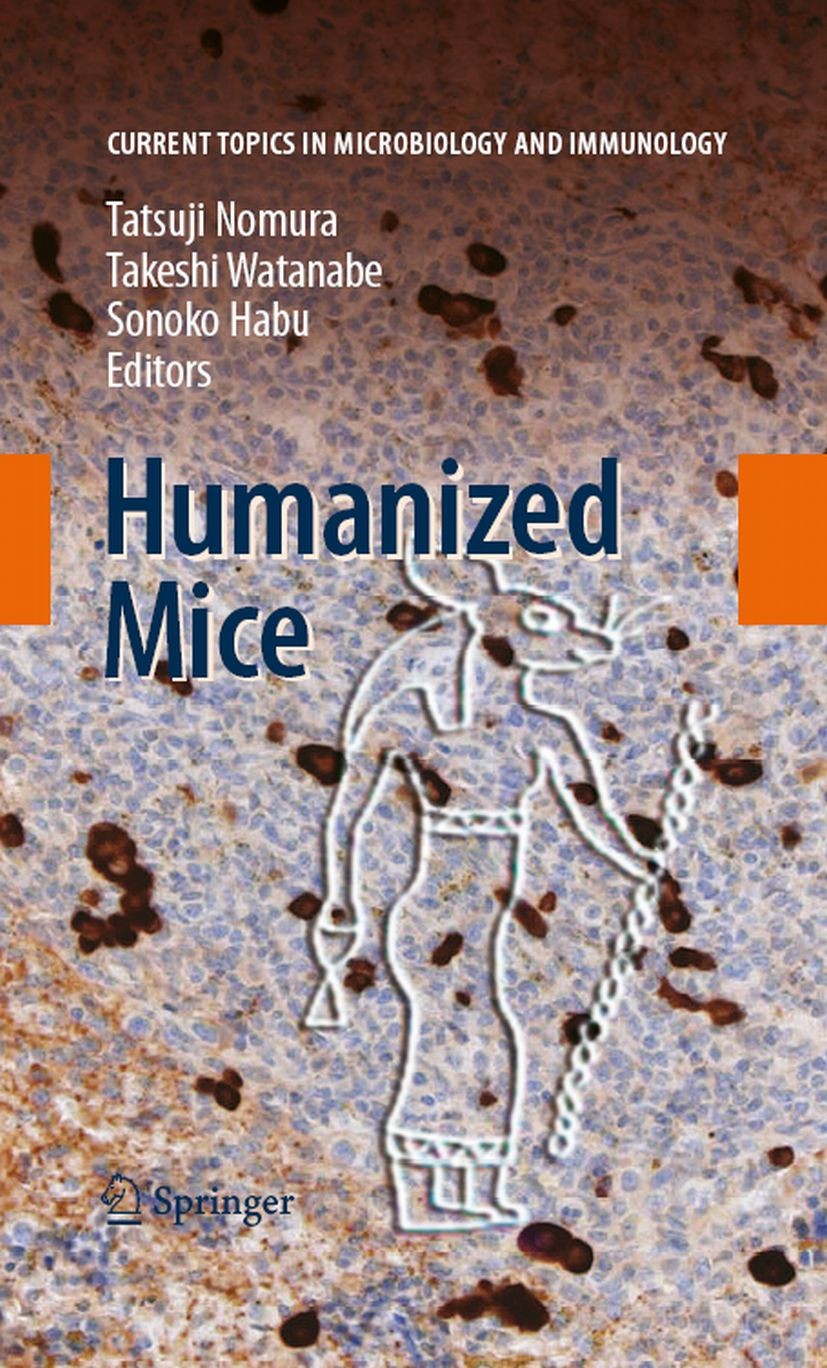| 书目名称 | Humanized Mice | | 编辑 | Tatsuji Nomura,Takeshi Watanabe,Sonoko Habu | | 视频video | http://file.papertrans.cn/430/429870/429870.mp4 | | 概述 | Includes supplementary material: | | 丛书名称 | Current Topics in Microbiology and Immunology | | 图书封面 |  | | 描述 | The term humanized mouse in this text refers to a mouse in which human tissues and cells have been transplanted and show the same biological function as they do in the human body. That is, the physiological properties and functions of tra- planted human tissues and cells can be analyzed in the mouse instead of using a living human body. It should therefore be possible to study the pathophysiology and treatment of human diseases in mice with good reproducibility. Thus, the hum- ized mouse can be used as a potent tool in both basic and clinical research in the future. The development of appropriate immunodeficient mice has been indispensable in the creation of the humanized mouse, which has been achieved through many years of efforts by several laboratories. The first stage on the road to the humanized mouse was the report on nude mice by Isaacson and Cattanach in 1962. Thereafter, nude mice were studied in detail by Falanagan and, in 1968, Pantelouris found that these mice have no thymus gland, which suggested that the mice lack transplan- tion immunity against xenografts such as human hematopoietic stem cells. At the Nude Mouse Workshops (organized by Regard, Povlsen, Nomura and co | | 出版日期 | Book 2008 | | 关键词 | Antigen; HIV; Laboratory; T cell; bone; cells; development; diseases; immune system; immunity; infection; patho | | 版次 | 1 | | doi | https://doi.org/10.1007/978-3-540-75647-7 | | isbn_softcover | 978-3-642-42077-1 | | isbn_ebook | 978-3-540-75647-7Series ISSN 0070-217X Series E-ISSN 2196-9965 | | issn_series | 0070-217X | | copyright | The Editor(s) (if applicable) and The Author(s), under exclusive license to Springer-Verlag GmbH, DE |
The information of publication is updating

|
|
 |Archiver|手机版|小黑屋|
派博传思国际
( 京公网安备110108008328)
GMT+8, 2025-12-27 06:43
|Archiver|手机版|小黑屋|
派博传思国际
( 京公网安备110108008328)
GMT+8, 2025-12-27 06:43


